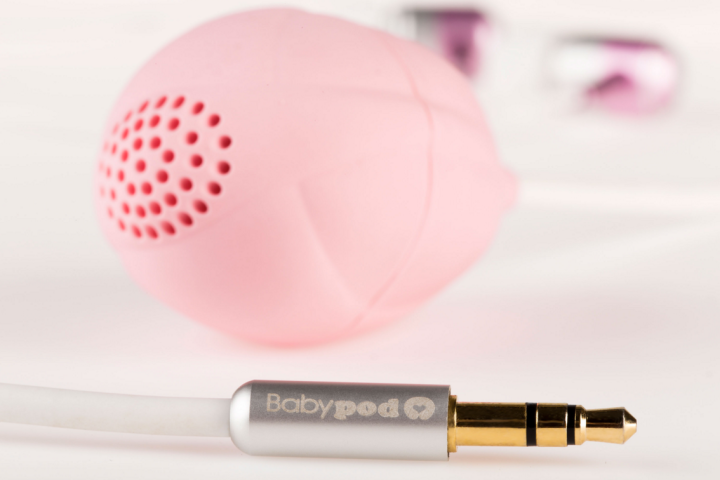
Currently, Babypod claims, the sounds that can be distinguished from inside the womb are understandably muffled. “The uterus is a place protected from the exterior, and it is the mother’s body that carries out this protecting role through multiple layers of soft tissue,” the website explains. “These attenuate the intensity of sound and distort it in its journey to the uterus; it’s similar to what happens when you hear a conversation in the next-door room without catching everything that is said.”
So if you want your baby to experience the same clarity we do in terms of sounds, you’ve gotta go through the vagina.
“By placing a speaker inside the vagina, we overcome the barrier formed by the abdominal wall and the baby can hear sounds with almost as much intensity and clarity as when emitted,” Babypod says. And while you may be asking, “Who cares?” the answer should be, “You” (if you’re an expecting parent, I mean).
According to research, music is instrumental in stimulating not only major brain changes in humans, but also in improving neurological development. Pediatricians often advise parents to provide musical stimuli to young children, but now, we have the ability to go back even further in time and in developmental stages. According to Babypod, after observing unborn children in the womb who listened to music via the intravaginal speakers, they found babies reacting with “body and/or mouth and tongue movements,” and that “the same baby has different responses each time the music is played.” This, the company says, is due to the unique “neuronal activity in the brainstem at the time.”
So sure, music and sound stimulus is good for baby — but is it good for mother as well? Babypod promises that its device is perfectly safe for moms, noting, “The material coming into contact with the mother’s body is silicone, which does not irritate the skin and is hypoallergenic,” and that “the emission of vibrating sound waves in the vagina has no adverse effects on the fetus.”
Further, the company’s clinical studies have been approved by an ethics committee, and “the first 100 children using Babypod have already been born and their otoacoustic emission studies at birth have been normal.” You won’t damage fetal hearing as Babypod’s sound intensity is just 54 decibels, “similar to a conversation in hushed tones.”
I mean really, what are you waiting for? Whether it’s Mozart or Miley you want you baby listening to, give him or her the best in-womb experience possible with Babypod.

